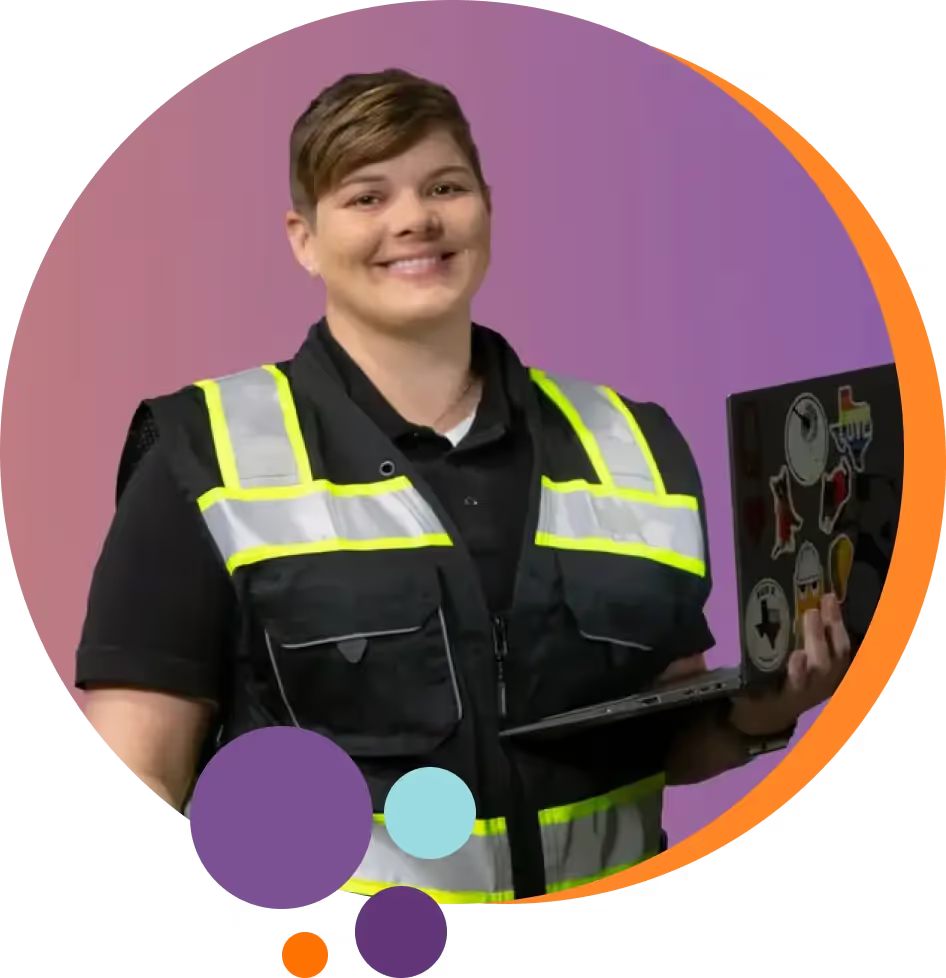To get the most out of web presentations and to learn how to make effective online presentations, it's critical to understand the best practices for this type of media. Here you will learn some tips for giving effective virtual presentations.
Key Takeaways
Online presentations are becoming increasingly common in this digital age. And there are a few important differences between them and traditional live presentations!
Your audience has a greater opportunity to stray and get distracted when it comes to web presentations. You must now compete for their eyes, ears, hearts, and minds against shorter attention spans, more home and work/life distractions, and competing priorities.
Get the Inside Scoop on Booming Technician Careers – Free Webinar!






Get the Inside Scoop on Booming Technician Careers – Free Webinar!






Get the Inside Scoop on Booming Technician Careers – Free Webinar!






Get the Inside Scoop on Booming Technician Careers – Free Webinar!

Get the Inside Scoop on Booming Technician Careers – Free Webinar!






Want to Become an Amazon Maintenance Technician?

Get the Inside Scoop on Booming Technician Careers – Free Webinar!






Get the Inside Scoop on Booming Technician Careers – Free Webinar!






Get the Inside Scoop on Booming Technician Careers – Free Webinar!






Want to make great web presentations?
Unmudl has just the right course for you for only $21!
We help people like you find new careers they love!

How to deliver better web presentations
While many presentation skills and best practices are applicable to both in-person and virtual presentations, expert virtual presenters recognize the importance of tailoring their approach to the medium. In-person presentations have a captive audience — you still need to be engaging, but your audience is stuck with you for the duration.
As mentioned above, this is not usually the case with online presentations. Your viewers are in a separate environment that can be full of distractions.
You can make better web presentations by making technology work for you.
Here are some expert pointers to help you succeed in your next web presentation:
1. Make use of presentation slides
Presentation slides, whether created in PowerPoint, Google Slides, Keynote, or Prezi, can truly elevate your presentation. This is particularly true for effective online presentations!
Online presentations are always difficult. It is impossible to control the distractions around your audience during an online presentation. With its visual aspect, a good slide design can help you channel your audience's attention into your presentation.
Presentation slides are a great way to illustrate your information and make it easier for the audience to understand. Even better, a well-designed slide can make your presentation more memorable!
Make sure your presentation slides complement your speaker rather than compete with them. Keep text to the minimum as much as possible in favor of visual elements such as icons, pictures, illustrations, and graphs.
Use your visual complements strategically to create the most effective web presentations possible. Consider the following: What is the purpose of this visual? Instead of "filler" images, use visuals that will have an impact on your audience.
Making presentation slides is an art in itself. Ideally, you should enroll in a short but quality course at an accredited community college to learn to master it.
Related: Quickest Way To Enroll in a Community College
.webp)
2. Never forget to do tech prep every single time!
Technology keeps us connected, but its complexity opens up new possibilities for disruption. Looking at technology through the lens of Murphy's Law, which states that anything that can go wrong will go wrong, is one way to prepare. Concentrate on what you have control over.
- Make use of the most dependable internet connection you can find. Web-conferencing service providers generally consider wired connections to be superior to wireless (WiFi) connections. WiFi connections are also thought to be superior to cellular connections.
- In case of a problem, have a backup laptop (or emergency tablet or phone) on hand.
- Download a PDF version of your presentation to have on hand in case of a technical glitch with your slides.
Unmudl Tip: Remember to delete your hidden slides before saving your presentation as a PDF, as they will not remain hidden when you display your PDF presentation.
- Close any unnecessary applications to avoid interfering with your web conferencing software. Turn off any other background activities that use a lot of memory or bandwidth, such as downloading or uploading large files or instant file synchronizations.
- Prepare by becoming acquainted with the platform you will be using. Experiment with muting and unmuting your microphone. If you're the host, try muting and unmuting one or more of the other participants. To avoid fumbling during the event, follow the instructions in the help center of your video conferencing app.
Related: 7 Ways to Better Contribute During Video Calls
3. Set the stage
Remove any potential distractions from your background to make things easier for your audience. If you don't have a good neutral background option, many video conferencing platforms provide digital backgrounds! You should test them first to ensure that they work well for you, but they can be a great option.
Lighting is an important factor to consider as well. Avoid sitting in front of a window or a bright light source as much as possible, as this will make your face appear too dark.
Remove any visual clutter from behind you. Clutter includes plants, boxes, stacks of books, food, toys, laundry, and pets — a plain wall is an ideal background to eliminate distractions and appear professional.
4. Avoid potential distractors
And while we're on the subject of distractions, it's also important to avoid your own! Nothing is worse than being in the middle of a presentation and receiving a loud text message that everyone in the room can hear.
Try to deliver your presentation in a calm and quiet environment to avoid interruptions from your side of the screen. A headset with a microphone could be a wise investment! This will assist you in isolating outside noises and making your own voice more audible to your audience.
You can also improve your online presentation delivery by turning off your desktop notifications! This way, you'll reduce potential distractions while going through your slides.
5. Pay special attention to lighting up your face
If the lighting in your room isn't ideal, place a desk lamp behind your laptop, directly over the camera, to illuminate your face. To make this work, reduce the lighting from other parts of the room by lowering the shades to prevent light from coming from the side or back.
If you sit with a bright window behind you, you will appear dark and foreboding. Adjust your seat so that the bright window is in front of you.
6. Fail to rehearse at your own risk
Sure, improvisation has a certain allure. Don't, however, leave your web presentations to chance. Take your time and practice your speech thoroughly. Otherwise, your online gig may appear unprofessional and sloppy.
Before any large presentation, we recommend that you usually give up to an hour of rehearsal time for every minute of talk.
Nathan Gold goes above and beyond. He says in this webinar, aptly titled ‘How to Captivate Your Online Audience with Nathan Gold,’ that when he trains TED and TEDx speakers, he asks them to commit to two hours of out-loud practice for every one minute of their talk.
What matters is that you are confident in your preparation. At the very least, go over your slides and content about an hour before your talk and practice your opening well so that you start strong.
7. Begin with a strong hook
Many people ask us how to start an online presentation speech. Speaking of strong beginnings. Captivate your audience from the beginning of your presentation. Start your presentation with a powerful statement, story, thought-provoking question, or startling statistic.
In this vlog by Slido, they share 5 different types of hooks to use to start your presentation. Another excellent practice is to actively engage your audience in your presentation from the start. Allow the technology to assist you there.
8. Body language is important
Body language, just like in a live presentation, can help you make a more effective online presentation! Body language assists you in conveying confidence, making yourself more approachable or likable to the audience, and improving your overall presentation.
Online presentations, like the previous points, necessitate special considerations. Set yourself too far away from the camera (too impersonal) but also too close (too intimidating!).
The best way to position yourself is so that the camera can see all the way down to your shoulders. This way, you'll appear friendly while still being able to emphasize key points with your hands' movements.
Unmudl Tip: Another tip is to practice looking at the camera! Many people make the error of looking at the screen, which is where your audience is. They won't make the connection made by eye contact, however, unless you talk to the camera!
.webp)
9. Re-engage your audience's attention on a regular basis
The attention of an audience can wane, especially during a lengthy online presentation. The attention tracking feature available in some web conferencing applications is one way to judge your listeners' attention level.
Attention tracking features are indicators next to each attendee's name in your attendee pane that show you if the person is using an app other than the web conference at the top of their screen.
Whether or not your web conferencing platform has an attendee tracking feature, think about how you can re-engage your audience's attention ahead of time.
For one thing, spread out your points across more slides rather than fewer, so that new slides appear on the screen at regular intervals to refocus wandering minds on you and your message.
Increase your pace to keep listeners from tuning you out. If you speak slowly, you risk losing your virtual audience. With frequent changes or interruptions in your speaking pattern, you can also re-engage flagging attention by:
- asking a direct or rhetorical question,
- soliciting feedback or comments,
- interspersing engaging images,
- telling an anecdote that illustrates your point,
- providing an example or two to explain a point,
- introducing a metaphor to bring a pivotal point to life,
- or showing a brief video clip that ties into your message
Use anything that is relevant and breaks up a monotonous pattern to make yourself appear more engaging as a presenter.
10. Allow Someone Else to Review the Chats.
A typical mistake online presenters make is that they get distracted by the chat. Don't let the chatter distract you from your presentation. If you try to read the chats while speaking, you'll be surprised at how distracting it is to your train of thought.
Instead, ask your co-host or producer to keep an eye on the chats. If you ask people to chat you answers or comments to a question you've posed, pause your conversation and interact directly with the chats by acknowledging them, reading them out loud, and commenting on them.
11. Make a final slide to summarize your points
By the end of your presentation, summarize all of the important messages and key lessons on a separate slide. You'll complete the circle, and your audience will have a good overview of what they learned.
Alternatively, conclude your presentation with a call to action or a specific next step for your audience to take. Encourage your participants to provide actionable steps they should take, and provide ways for them to stay in touch with you.
12. Request feedback
Feedback is the best gift your audience can give you in exchange for the knowledge you shared during your presentation. You won't know what your audience liked or disliked if you don't have it. This is the stuff that makes you better and better with every presentation.
Make a simple feedback survey and have your audience fill it out at the end of your presentation.
Make it simple for your audience to take part in the survey. For example, displaying a QR code on the screen and explaining how participants should scan the code and take the survey is a great idea.
The feedback form can be as simple as three questions. Try something like this:
- How would you rate this presentation on a scale of 1 to 10?
- What was your favorite part of today's presentation?
- Can you think of anything that could have been done better?
How to get better at making web presentations
All the above tips will help you improve your online presentations but the best way is to train yourself to make better web presentations with a course. You will not only learn firsthand from experienced trainers but will end up with a certificate that will add great value to your resume.
Related: How to Get Hired From a Community College
We highly recommend the following short online certificate course to master the art of online presentations.

GateWay Community College: Delivering Great Web Presentations
Course Fee: $21.04Total Price (Excluding Tax)
Course Description: Learn what you need to do to create powerful web presentations.
Learning Objectives: After completing this course, you will be able to:
- Prepare for your virtual presentations - Recognize the difficulties of presenting remotely and what is required for success.
- Web-based Presentation Fundamentals - Implement tried-and-true methods to ensure consistently excellent web-based presentations.
- Communication Techniques for Web-Based Presentations - Use three essential communication techniques to deliver successful web-based presentations.
About GateWay Community College:
GateWay Community College has a legacy of innovation in Phoenix, which is one of the fastest-growing major metropolitan areas.
The college has a reputation for educating and training future workforces in healthcare and nursing, manufacturing and industrial design, automotive, beauty and wellness, as well as business, IT, water technologies, and the legal system.
They also provide the courses required to begin a bachelor's degree.
GateWay is located near or partners with a variety of industries, including Fortune 1000 international companies with headquarters in Phoenix, such as Avnet, PetSmart, Apollo Education Group, Republic Services, ON Semiconductor, Insight Enterprises, and Sprouts Farmers Market.
Final Thoughts
We hope you're more confident about presenting online by now, and that the tips above will help you become a better online speaker.
As audiences become more global and you need to reach more people via technology (such as webinars, conference calls, and teleconferences), you must consider the challenges of connecting with a virtual audience.
Remember that all presentations, whether in person or virtually, are performances. And all performances are for the benefit of your audience. Their time is valuable, so respect it by giving them the best presentation you can.
Especially in the case of web presentations, you must find ways to create genuine audience connection, engagement, and value.
Finally, we also shared with you a short online course at an accredited community college to help you master web presentations.







